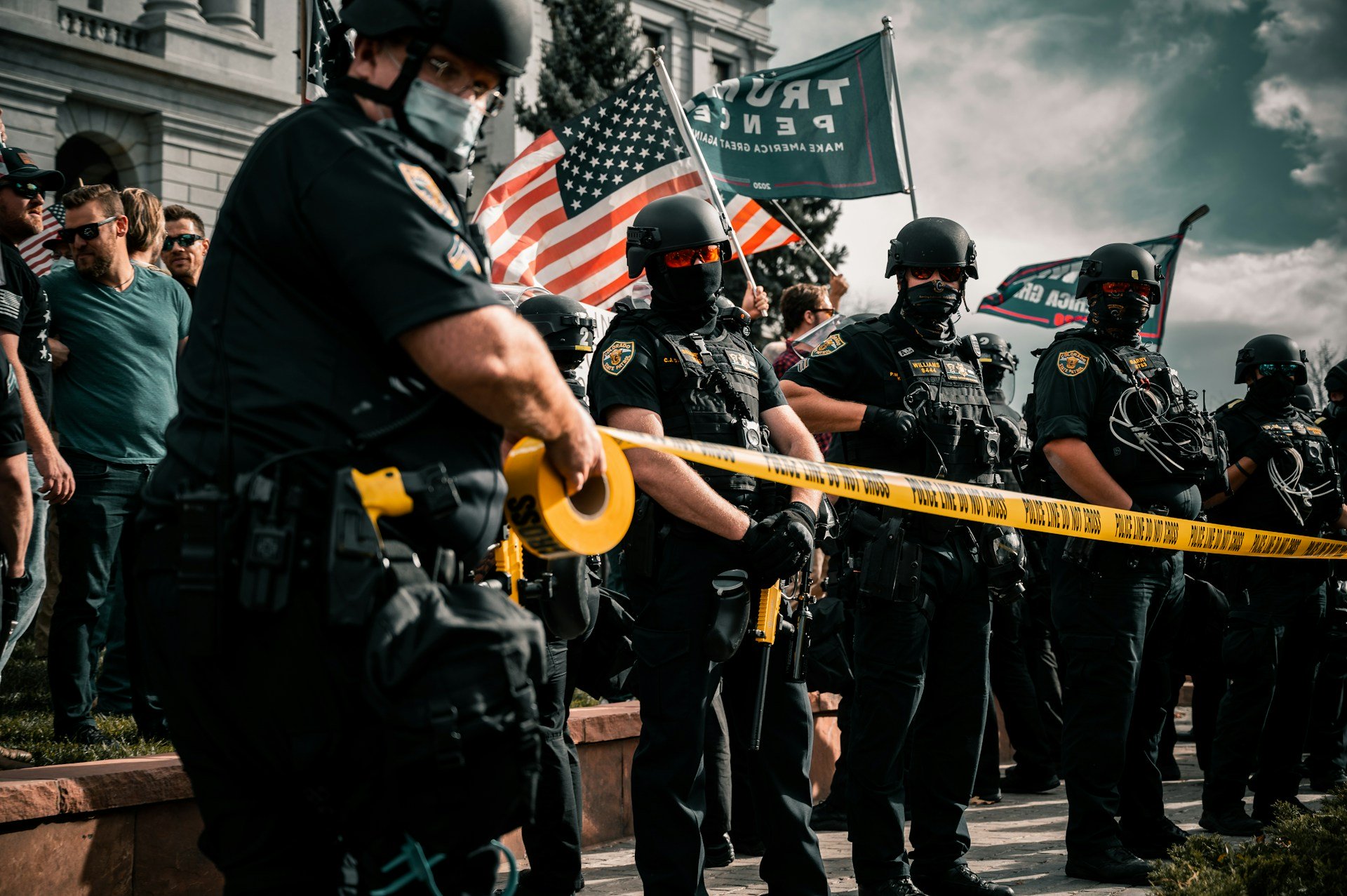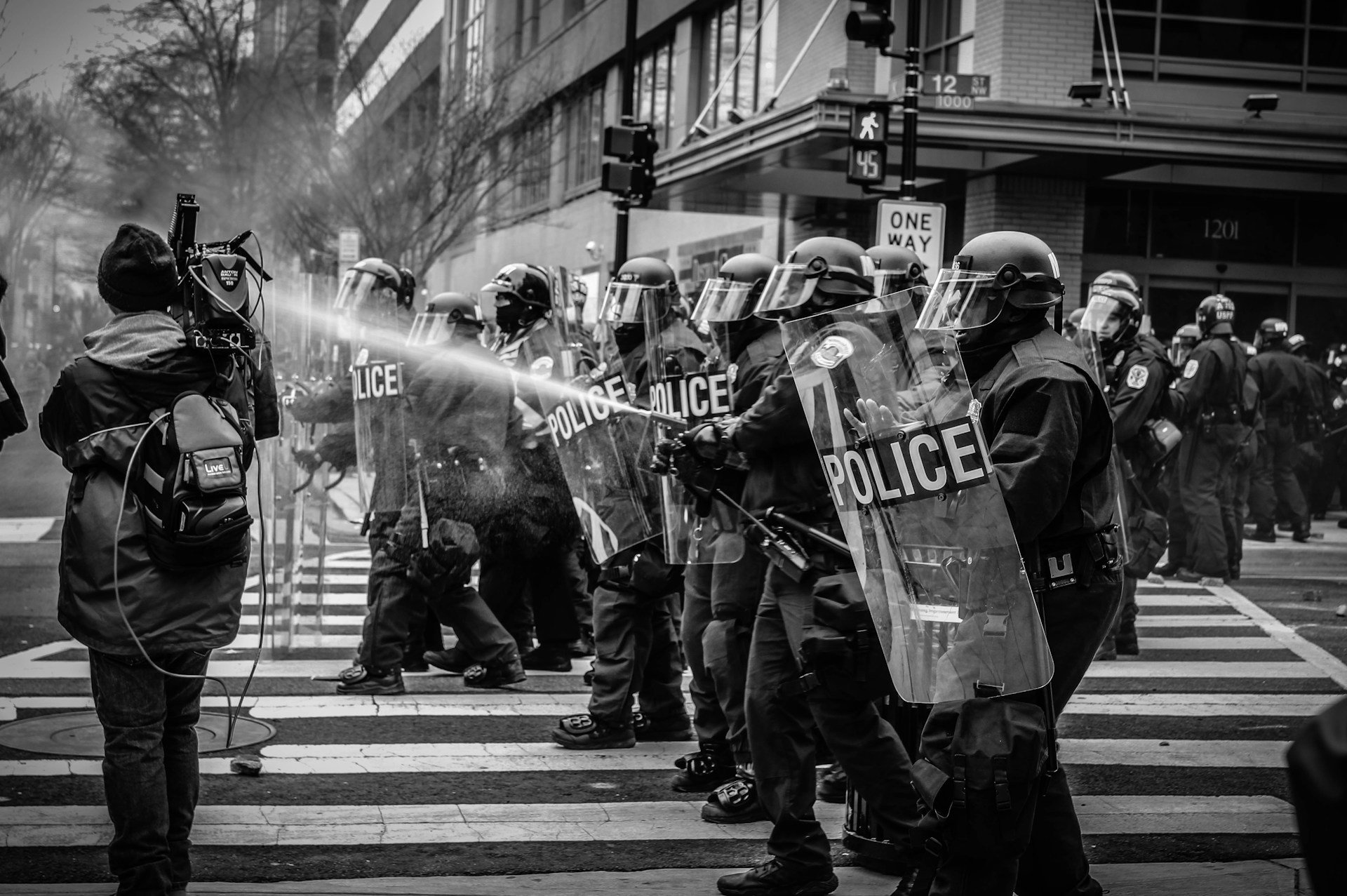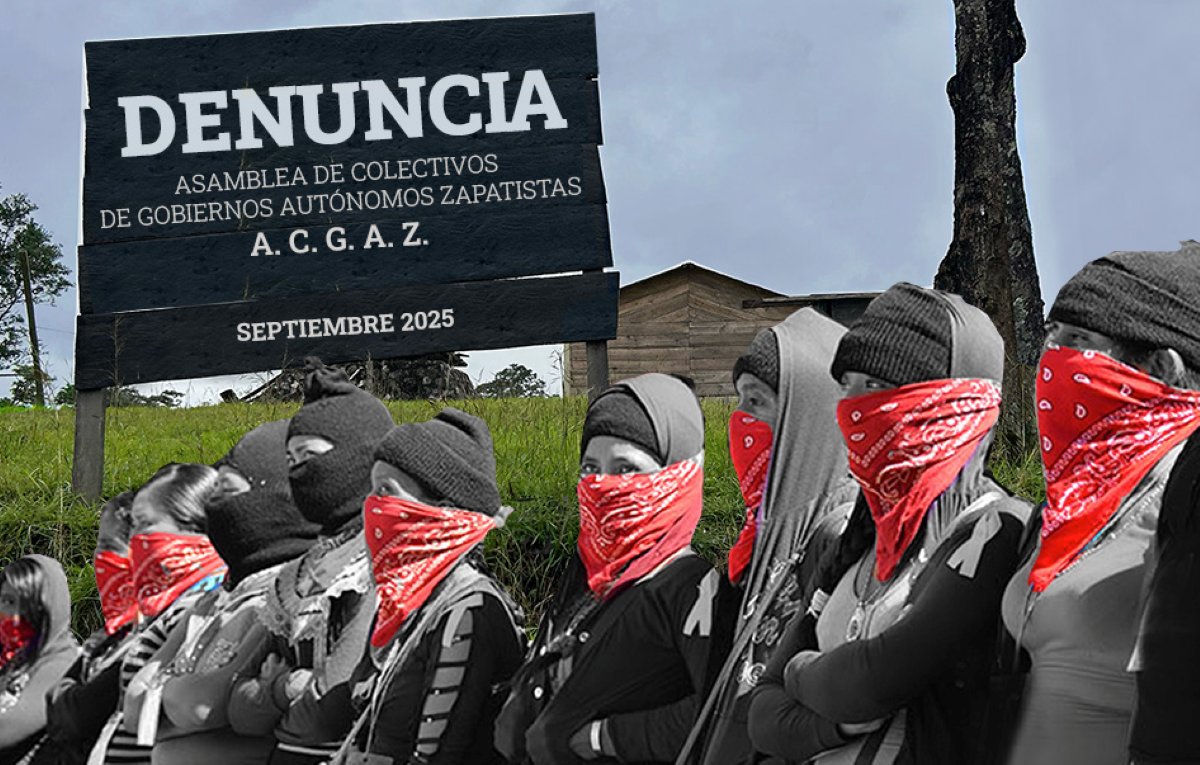Filed under: Analysis, Anti-fascist, The State, US

An analysis from Three Way Fight on the state of the MAGA movement in 2024 and how it has changed since the 2016 election cycle.
By Matthew N. Lyons
In 2020 I described the US presidential race between Joe Biden and Donald Trump as a choice not between a lesser evil and a greater evil, but between the abysmal and the catastrophic. This year, with Kamala Harris versus Trump, we get to choose between a Democratic option more abysmal than four years ago and a Republican option even more catastrophic than last time. On one side, Trump has amped up the supremacist lies, calls to violence, and nakedly dictatorial fantasies to unprecedented levels, while the MAGA forces behind him have been working diligently to make an effective, organized authoritarianism much more likely this time around. On the other side, Harris seems intent on embracing Republican positions on everything except abortion rights, while remaining committed to funding Israel’s ever-intensifying genocide in Gaza and beyond.
US presidential elections have always been a caricature of democracy, but this is the most appalling no-win “choice” US voters have faced in my lifetime, maybe ever. Yet both major party options reflect systemic developments stretching back decades—two sides of a trend that has made the disconnect between political system and basic human decency more and more obvious.
In the notes that follow I want to look at the Trump side of this contest. Drawing on my writings over the past nine years, I offer some tentative reflections on how Trump and the MAGA movement have evolved and what they can tell us about the US political system today. One way or another, whoever wins the presidency, these developments will be unavoidable in the years ahead.
Eroding the Divide between Far-Right and Mainstream Right
A key element of Donald Trump’s presidential career has been his symbiotic relationship with the U.S. far right, by which I mean those rightists who reject the legitimacy of the existing political system. This relationship has been unprecedented for any US president (or any major party presidential candidate), but it has also been complex, unstable, and continually in flux. In 2016, the relationship centered on the alt-right, whose online attacks on Trump’s opponents—both Republican and Democrat—helped put him in the White House, and were repaid by big boosts in visibility and recognition for the alt-right and its goals. But in 2017, many alt-rightists soured on what they saw as Trump’s cooptation by the conservative establishment, and their movement itself collapsed from a combination of infighting and antifascist countermobilization.
In 2020, Trump’s relationship with the far right centered more on the Patriot movement, which that year spearheaded a series of protests against COVID “lockdowns” and a wave of violent attacks against Black Lives Matter protesters. Although largely rejecting federal government authority, and with a history of killing cops, Patriot activists embraced President Trump and his efforts to expand the federal government’s repressive apparatus, which they rationalized as defense of a populist upsurge against sinister elites. In return, Trump’s fearmongering helped validate Patriot groups’ conspiracism and base-building efforts.
After the 2020 presidential election, Trump’s false claims of widespread voter fraud inspired the “Stop the Steal” campaign and the January 6 attack on the US Capitol, an insurgent attempt by Trump supporters to overturn the election results by force. These efforts led tens of millions of Americans to reject the validity of the voting process, which is supposed to be the foundation for the whole US system of government.
In 2024, the far right as an independent, active force is in a relative lull, partly because of the Biden administration’s crackdown against January 6th attackers and partly because of cooptation by Trump and the MAGA movement. The creative tension of past years between the far right and mainstream right has, for now, largely been replaced by a new dynamic of bringing key elements of far right politics into the Republican Party itself.
MAGA forces have continued the decades-old incremental process of shifting the Overton Window rightward by taking supremacist attacks on immigrants, trans people, and other oppressed groups that were pioneered by far rightists—as well as conspiracy theories such as the white supremacist “Great Replacement”—and making them more and more acceptable and integral to mainstream politics.
The Republicans’ embrace of election denialism, however, represents a qualitative shift. Many Republican leaders initially denounced the January 6th attack on the Capitol but later reversed themselves, and Republican leaders are now expected, if not required, to endorse claims that the 2020 election was stolen. Voter fraud claims have tended to spread, undermining the legitimacy of any national, state, or local election that doesn’t go the way rightists want. The party’s platform has also shifted dramatically: while the 2016 platform was standard fare conservatism, the 2024 version echoes Trump’s America First rhetoric about rescuing a nation in “SERIOUS DECLINE” from the evils of globalism and a migrant “invasion.”
These changes haven’t turned the Republican Party into an insurgent organization, but the party appears ready, at least for now, to set aside the established institutional framework for the sake of personal loyalty to a charismatic leader with dictatorial tendencies. At the same time, by refashioning the Republican Party in his own MAGA image, Trump has encouraged many far rightists to give him another chance, discouraging them from independent actions that might conflict with his political project and effectively corralling them once again into a kind of contingent system loyalty.
Laying the Groundwork for Authoritarian Rule
Donald Trump has a long history of admiring figures like Viktor Orbán and Xi Jinping. Lately Trump’s dictatorial ambitions have gotten more blatant, as in his comment about being a dictator on day one in the White House and his frequent threats to use the state apparatus to punish political enemies. Having millions of people accept and applaud this outlook has helped legitimize authoritarianism in US political culture.
Rhetoric aside, there are several reasons to think a second Trump presidency is likely to be significantly more authoritarian than the first one:
- As part of his comeback bid, Trump and his followers have seized control of the Republican Party more tightly and systematically than ever before. Trump has bent Congressional Republicans to his will, packed the party’s organizational leadership with his own loyalists, and scrapped the traditional program-writing process to impose a new party program by fiat. Party staff members have been subjected to loyalty tests, even at the cost of organizational capacity.
- The Supreme Court’s 2024 decision that presidents have broad immunity from prosecution for “official acts” dramatically weakens institutional checks on presidential power and undermines a core principle of the liberal state.
- Over the past few years, Republican-led governments in many states have undertaken a systematic campaign to suppress voting and make control over the electoral system more partisan. In 2022, Political Research Associates warned that “state-level GOP figures—supported by the national leadership—are achieving their goal of making it harder for people to vote, and easier for state legislatures to overturn election outcomes and to strip state courts and professional election officials of their power to expand access to voting and guarantee fair elections.” This campaign has continued.
- Trump’s 2017-2021 administration was chaotic and disorganized, and some of his big initiatives got held up by the courts, bureaucracy, or logistical barriers. A second Trump presidency could be much more effective, given the extensive planning that’s been underway for the past four years on how to translate MAGA ideology into policy and how to reshape the federal bureaucracy to do Trump’s bidding—and the hundreds of judges Trump appointed the first time.
- Millions of Trump supporters are armed. The January 6th attack broke the taboo against deploying masses of violent activists to harass, threaten, and disrupt the workings of government. Despite the Biden administration’s crackdown on January 6 participants, it’s likely that MAGA forces will build on this precedent.
Expanding Fascistic Tendencies
Donald Trump has been called a fascist since the early days of his presidential candidacy for 2016. Over the past nine years I have repeatedly argued against this description, while noting that both his campaigns and his administration had important fascistic tendencies. But I’ve also argued that we need to treat the question dynamically, being alert to both changes in Trump’s politics and the interplay between his politics and other forces.
Fascism is a category we impose on political phenomena to help make sense of them. The question isn’t whether a given conception of fascism is “true,” but whether it’s more or less useful, both analytically and strategically, for understanding political connections and differences. A three way fight approach argues that it’s most useful to think of fascism as an autonomous political force that makes a radical break with the established order, intensifying existing hierarchies in many ways but also challenging established elites for power. Three way fight politics also warns that there is nothing inherently fascist about dictatorship, racial oppression, or even genocide, and that even anti-fascism can be used to advance political repression against liberatory forces.
Trump has promoted many elements of fascist politics, such as political demonization, supremacist attacks on oppressed groups, authoritarianism, and a distorted kind of anti-elitism based on conspiracist scapegoating. As noted above, he also cultivated a symbiotic relationship with organized fascists and other far rightists. But some key pieces of fascist politics were always missing. Trump didn’t offer an ideological vision to systematically transform society, he didn’t try to build an independent organizational base, and he didn’t challenge the legitimacy of the established political system—at least for a while.
The changes I outlined in the previous sections above have brought the MAGA movement significantly closer to fascist politics, although important differences are still there. Trump and his supporters have brought a kind of system disloyalty into mainstream politics in a way we didn’t see in 2016, and have intensified the shifts toward authoritarianism and supremacist scapegoating. MAGA forces haven’t built a new, unified mass organization, but they’ve spent the past eight years developing an extensive, if loose political network, and they’ve gained much tighter control of the Republican Party than they ever had before, at least temporarily. Initiatives such as the Heritage Foundation’s Project 2025 have helped flesh out an overall ideological vision for the movement. And having tried once already to overturn the results of a presidential election by force, MAGA forces can be expected to do so again if they don’t win outright, as in 2020-21 using some combination of propaganda, bogus legal challenges, and physical attacks to discredit and challenge the election—but this time in a more organized and systematic way.
These developments mean that Trump’s presidential bid is even more dangerous than it was four years ago. At the same time, in my view they don’t represent fascism’s full-scale, radical break with the established order. Fascism aims to impose a unified ideological vision on all spheres of society, from politics to the workplace, from mass media to family life. This goes far beyond the kind of policy prescriptions we see in Project 2025. Some of the forces that support Trump, such as the powerful New Apostolic Reformation network, have that kind of comprehensive vision, but they don’t control the MAGA movement as a whole—witness Trump’s retreat from staunch opposition to abortion rights to a “let the states decide” position.
The MAGA movement is part of a new international wave of right-wing populist initiatives that have surged over the past two decades and especially since the 2008 global economic crisis. These initiatives have a lot of fascistic features, notably authoritarianism, aggressive nationalism, and ethnic or religious scapegoating. In power, they carry out supremacist policies and intensify repression, but they work within the existing governmental framework in a way that limits their power to some degree. For example, Poland’s Law and Justice Party was voted out of office in 2023, while India’s Bharatiya Janata Party lost parliamentary seats in 2024—despite jailing or threatening many opposition leaders—and was forced to govern in coalition after ten years of single-party governance. That’s not how fascist states work.
To be clear, a second Trump presidency would be disastrous. Recognizing and countering that danger is more important than whether we call it fascist or not. And Trump doesn’t have to dismantle the US electoral system to wreak massive damage. That “democratic” electoral system, in its various incarnations, has provided the framework for witchhunts and lynchings, roundups of political dissenters, the enslavement of African people and genocide against Indigenous nations. It can be turned to such ends again.
Rallying Capitalists Against Neoliberalism?
Donald Trump’s political relationship with the US ruling class is complicated. Trump was the first billionaire president of the United States and has consistently pushed policies that increase capitalists’ wealth and power. Yet 2016 was the first presidential election since 1964 in which big business heavily favored the Democrats. That year, as I have argued,
“Trump’s support within the big business community was—for any president and especially a Republican one—unusually limited, fragmented, and unstable. Trump certainly had staunch capitalist supporters such as Peter Thiel, Sheldon Adelson, and Robert and Rebekah Mercer. Yet his capitalist opponents included not just liberals and centrists such as Tom Steyer and Michael Bloomberg but also the billionaire brothers Charles and David Koch, who were notorious backers of right-wing causes but also vocal critics of Trump’s positions on immigration and trade. These conflicts belied claims by some liberals and leftists that the administration represented a ruling class consensus-based drive to implement ‘neoliberal fascism.’”
In 2016, Trump and his MAGA supporters advocated a form of nationalist populism embodied in the slogan “America First,” which challenged neoliberal orthodoxy on trade and immigration and also called into question the establishment’s related consensus around military interventionism and traditional overseas alliances. This ideology won support from various outsider forces within the U.S. ruling class—a capitalist support base for Trump that one team of scholars described as “extremely unstable”:
“It is made up of several layers of investor blocs with little in common other than their intense dislike of existing forms of American government. The world of private equity, intent on gaining access to the gigantic, rapidly growing securities markets of China and the rest of Asia or casinos dependent on licenses for their lucrative businesses in Macau are likely to coexist only fitfully with American industries struggling to cope with world overcapacity in steel and other products or facing twenty-first century mercantilist state targeting.”
This instability was compounded within Trump’s presidential administration. Because his support base, at both elite and mass levels, was limited and disorganized, Trump was compelled to put together a coalition of America Firsters and conventional conservatives. This resulted in an administration riven by deep conflicts between supporters and opponents of neoliberalism. The administration pushed some policies that neoliberals liked, such as environmental deregulation and tax cuts for corporations and the rich, but also implemented aggressive measures to restrict trade and reduce the number of immigrants, both legal and undocumented. President Trump’s foreign policies also reflected a tug-of-war between aggressive militarists and right-wing anti-interventionists in and around the administration.
I believe this analysis has held up and remains useful for assessing the current situation, although I’m not in a position to bring the analysis up to date in any sort of systematic way. Trump heavily lost credibility in the business community after January 6th but, with his political comeback in the 2024 presidential race, has largely regained that ground. Beyond that, there are plenty of anecdotal reports about shifts in how capitalists have been responding to Trump, but it’s hard to pick out which of these are more significant. For example, does it matter more that many billionaires have endorsed Trump, or that almost no Fortune 100 CEOs have done so?
I don’t see any indication of a cohesive pro-Trump or pro-MAGA bloc emerging among US capitalists, but I do see indirect signs that the ruling class’s neoliberal consensus has continued to weaken over the past eight years. The Biden administration has retained modified versions of Trumpist policies on trade and immigration, while the Heritage Foundation—founded in the 1970s as a key champion of neoliberalism—has embraced MAGA politics with its Project 2025. Trump and his ideological supporters have both contributed to and benefited from these shifts. In the longer term, the impact and direction of the MAGA movement or its successors will hinge in part on bringing together a more stable capitalist support faction.
An Impossible Choice
I prefaced these notes by emphasizing the impossible choice posed by the 2024 US presidential election. As I said, a Trump victory in 2024 would be an even worse catastrophe than it would have been in 2020, and yet the other possible outcome, a win for Harris and the Democrats, looks even more abysmal than it did four years ago. The Democrats’ preoccupation with wooing Republican support, their refusal to meaningfully address the profound economic and social problems and inequities that fuel populist anger, even their crime against humanity in continuing to fund Israel’s genocide, all these reflect strategic choices but also, on a deeper level, the inherent character of the Democratic Party itself. As I wrote in 2022:
“Calling the Democratic Party ‘weak’ is like calling a multinational corporation ‘greedy’: it targets subjective behavior while ignoring the structural reality that underlies it. The Democratic Party was created by Andrew Jackson and his followers as a vehicle to mobilize popular support for white supremacist capitalism, and although the party’s ideology and policies have changed dramatically over the generations, its core mission—its structural role in U.S. society—has remained the same. Since the late 1970s, the party has functioned largely to coopt ‘progressive’ constituencies into supporting kinder, gentler versions of neoliberal policies (or in the case of the Biden administration, Trumpist policies with regard to China, trade, and immigration). The Democratic Party also bears a major part of the responsibility for the growth of the repressive state apparatus over the past half century, a process that helped pave the way for today’s right-wing authoritarian threat.”
A Democratic victory next month would stave off the worst possible outcome. But unless something seriously changes, this will just be a delaying action.
Photo by Colin Lloyd on Unsplash





